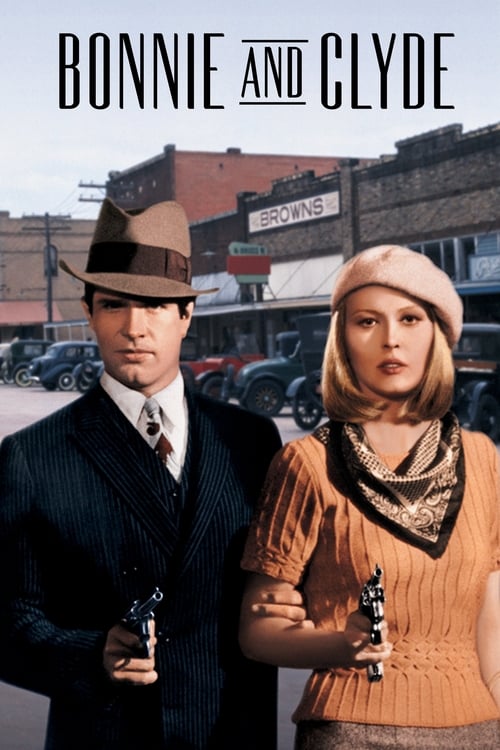
Title: Bonnie and Clyde
Year: 1967
Director: Arthur Penn
Writer: David Newman
Cast: Warren Beatty (Clyde Barrow),
Faye Dunaway (Bonnie Parker),
Michael J. Pollard (C. W. Moss),
Gene Hackman (Buck Barrow),
Estelle Parsons (Blanche),
Runtime: 111 min.
Synopsis: In the 1930s, bored waitress Bonnie Parker falls in love with an ex-con named Clyde Barrow and together they start a violent crime spree through the country, stealing cars and robbing banks.
Rating: 7.486/10
Blood and Dust: The Visceral Elegance of Bonnie and Clyde
/10
Posted on August 1, 2025
Arthur Penn’s Bonnie and Clyde (1967) is a cinematic thunderbolt, a film that rewrites the grammar of violence and romance with a deft, almost painterly hand. Its brilliance lies not in its story a Depression-era crime spree by two young lovers but in how it wields tone, rhythm, and visual language to make the familiar feel alien. Penn, alongside cinematographer Burnett Guffey, crafts a world where beauty and brutality coexist in uneasy harmony, each frame a tableau of dust-choked roads and blood-streaked faces. The film’s visual palette, with its muted golds and greens, evokes a nostalgic Americana, only to shatter it with sudden, jarring violence. This interplay mirrors the protagonists’ own duality: Clyde Barrow (Warren Beatty) and Bonnie Parker (Faye Dunaway) are both mythic rebels and flawed, desperate dreamers.
The screenplay, by David Newman and Robert Benton, is a masterclass in economy and subtext. Dialogue crackles with wit, yet carries the weight of unspoken longing. Bonnie’s early seduction of Clyde, laced with playful bravado, reveals her hunger for escape from small-town ennui. Beatty’s Clyde, impotent in body but not in ambition, channels his frustrations into a performative machismo that’s both magnetic and tragic. Dunaway, meanwhile, delivers a performance of astonishing precision her Bonnie is a restless poet, her eyes flickering between defiance and vulnerability. Their chemistry doesn’t smolder; it erupts, making their doomed love feel like a fever dream.
Yet, the film’s greatest triumph is its tonal audacity. Penn shifts from slapstick to horror with a fluidity that disorients. The banjo-driven chase scenes, scored by Flatt and Scruggs, lend a darkly comic energy, only to give way to visceral shootouts that prefigure the graphic violence of later cinema. This tonal whiplash is deliberate, forcing viewers to confront their complicity in rooting for these killers. However, the film falters slightly in its pacing; the midsection, with its repetitive heists, occasionally drags, diluting the narrative’s urgency. Still, this is a minor blemish in a work of such daring.
Bonnie and Clyde redefined the gangster genre, not by glorifying crime but by humanizing its perpetrators. Its locations rural Texas and Louisiana, shot with an almost documentary-like grit ground the myth in tactile reality. Penn’s direction, blending French New Wave flair with American pathos, ensures the film feels timeless, a elegy for rebels who burn bright and die young.
0
0
